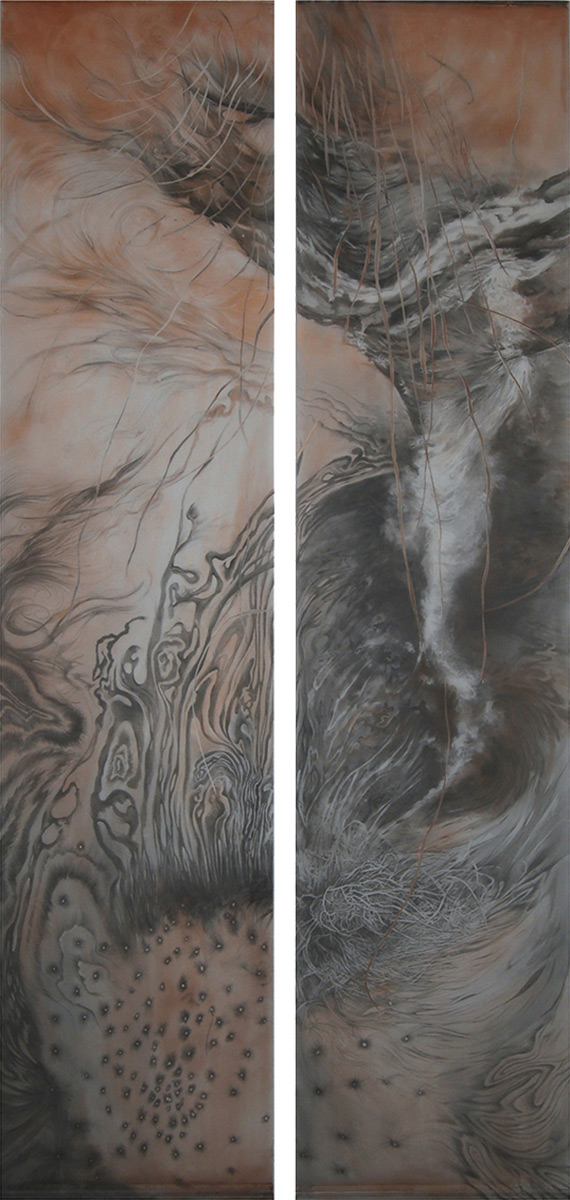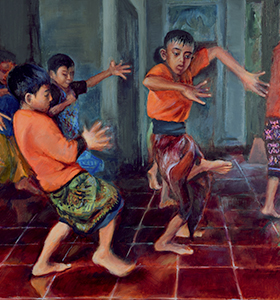

The Vortex Scrolls
Graphite and metallic pigment on frosted mylar
18 x 79″ each
38 x 79″ hung as diptych
2010
The Vortex Scrolls
Graphite and metallic pigment on frosted mylar
18 x 79″ each
38 x 79″ hung as diptych
2010
The Vortex Scrolls
Graphite and metallic pigment on frosted mylar
18 x 79″ each
38 x 79″ hung as diptych
2010
The Vortex Scrolls are included in my Surface Tension series as a powerful ocean force. Whirlpools (vortex) form where tidal currents oppose each other. This creates a circular action that can intensify.
Vortex is the fluid dynamic term for how fluid revolves around a straight or curved axis. Vortices form in stirred liquids, draining water, smoke rings, tropical cyclones, tornadoes, and dust devils. This natural phenomenon is the driving force of threatening storms and the rotation of plastic trash in the Pacific Ocean.
The Greek mythological character Charybdis was a whirlpool believed to be a sea monster. Charybdis and Scylla were two opposing sea monsters in a narrow strait off the coast of Sicily. It was told that Charybdis swallowed a large gulp of water three times a day before belching it out again. This created large whirlpools that dragged small ships under.
Whirlpools were once referred to as “the Navel of the Sea.” The strongest Whirlpool recorded is in Saltstraumen near the Artic Circle. Strong tidal currents create a whirlpool recorded as 10 meters (33 ft.) wide and 5 meters (16 ft.) deep at the cycle’s peak.
Edgar Allen Poe wrote “Descent into the Maelström” in 1841. On a mountain climb in Norway, an old man told the tale of a hurricane that sucked his ship and brother into the abyss of a vortex. Here is the tale he told…
“You suppose me a very old man,” he says, “but I am not. It took less than a single day to change these hairs from a jet black to white, to weaken my limbs, and to unstring my nerves.”
The Great Pacific Garbage Patch Vortex circulates from the west coast of North America to Japan. International debris starts to swirl because the warm water from the South Pacific meets cool water from the Arctic. The debris is plastic broken into tinier pieces or microplastics. Microplastics make the water look like cloudy soup, but about 70% of trash settles on the Ocean floor.
The Vortex Scrolls are a symbol of the ocean’s power. I used graphite and metallic pigment to draw the petroleum sheen, erasing into translucent mylar to depict hydropower. This award-winning shimmering diptych symbolizes nature’s strength.
